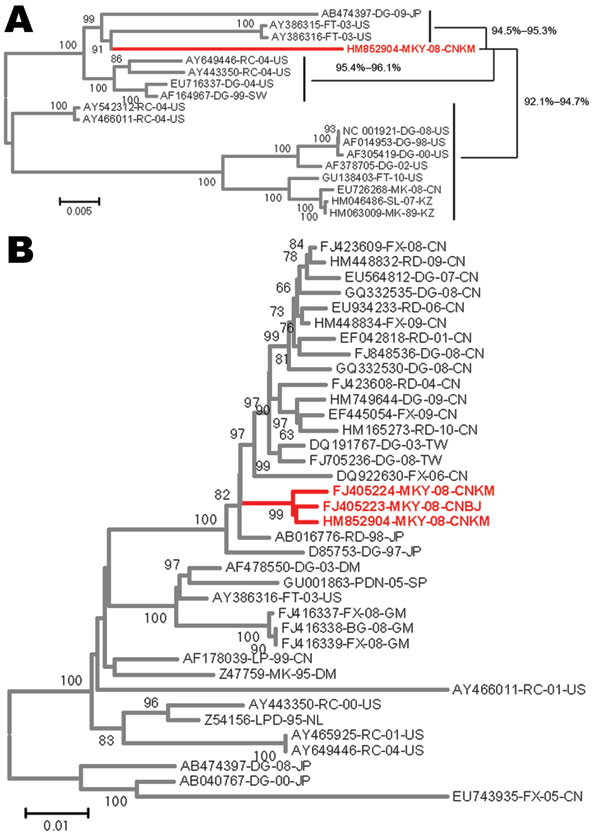Volume 17, Number 8—August 2011
Dispatch
Canine Distemper Outbreak in Rhesus Monkeys, China
Figure 2

Figure 2. Phylogenetic analysis of the canine distemper virus by comparison of the genome or gene of the monkey isolate with other canine distemper virus isolates. A) Full genome. B) H gene. FX, fox; CN, People’s Republic of China; RD, raccoon dog; DG, dog; TW, Taiwan; MKY, monkey; CNKM, Kunming, People’s Republic of China; CNBJ, Beijing, People’s Republic of China; JP, Japan; DM, Denmark; PDN, Lynx pardinus; SP, Spain; FT, ferret; US, United States; GM, Germany; BG, badger; LP, lesser panda; MK, mink; RC, raccoon; LPD, leopard; NL, the Netherlands. Scale bars indicate phylogenetic distance between isolates.
1These authors contributed equally to this article.
Page created: August 15, 2011
Page updated: August 15, 2011
Page reviewed: August 15, 2011
The conclusions, findings, and opinions expressed by authors contributing to this journal do not necessarily reflect the official position of the U.S. Department of Health and Human Services, the Public Health Service, the Centers for Disease Control and Prevention, or the authors' affiliated institutions. Use of trade names is for identification only and does not imply endorsement by any of the groups named above.